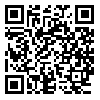BibTeX | RIS | EndNote | Medlars | ProCite | Reference Manager | RefWorks
Send citation to:
URL: http://irj.uswr.ac.ir/article-1-367-en.html

 , Mojtaba Azimian *
, Mojtaba Azimian * 
 1, Anahita Khorrami banaraki2
1, Anahita Khorrami banaraki2 
 , Javad Alaghband rad2
, Javad Alaghband rad2 
 , Seyed Majid Rafiee2
, Seyed Majid Rafiee2 
 , Mahyar Salavati1
, Mahyar Salavati1 
 , Fateme Tahmaseb Zade1
, Fateme Tahmaseb Zade1 
 , Zahra Sedigh1
, Zahra Sedigh1 
 , Sara Pishevar1
, Sara Pishevar1 
 , Vahide Mohammadi Sabet1
, Vahide Mohammadi Sabet1 

2- Tehran University of medical Sciences, Tehran, Iran.
Objectives: Lexical access is the process by which the basic conceptual, syntactical and morpho-phonological information of words are activated. Most studies of lexical access have focused on picture naming. There is hardly any previous research on other parameters of lexical access such as verbal fluency and analysis of connected speech in Persian normal participants. This study investigates the lexical access performance in normal speakers in different issues such as age, sex and education.
Methods: The performance of 120 adult Persian speakers in three tasks including picture naming, verbal fluency and connected speech, was examined using "Persian Lexical Access Assessment Package”. The performance of participants between two gender groups (male/female), three education groups (below 5 years, above 12 years, between 5 and 12 years) and three age groups (18-35 years, 36-55 years, 56-75 years) were compared.
Results: According to findings, picture naming increased with increasing education and decreased with increasing age. The performance of participants in phonological and semantic verbal fluency showed improvement with age and education. No significant difference was seen between males and females in verbal fluency task. In the analysis of connected speech there were no significant differences between different age and education groups and just mean length of utterance in males was significantly higher than females.
Discussion: The findings could be a primitive scale for comparison between normal subjects and patients in lexical access tasks, furthermore it could be a horizon for planning of treatment goals in patients with word finding problem according to age, gender and education.
Received: 2014/01/10 | Accepted: 2014/03/27 | Published: 2014/06/1
| Rights and permissions | |
 |
This work is licensed under a Creative Commons Attribution-NonCommercial 4.0 International License. |



